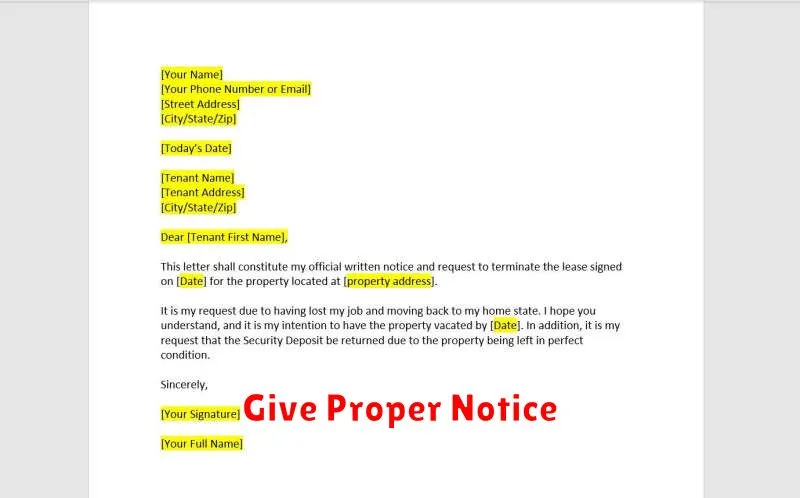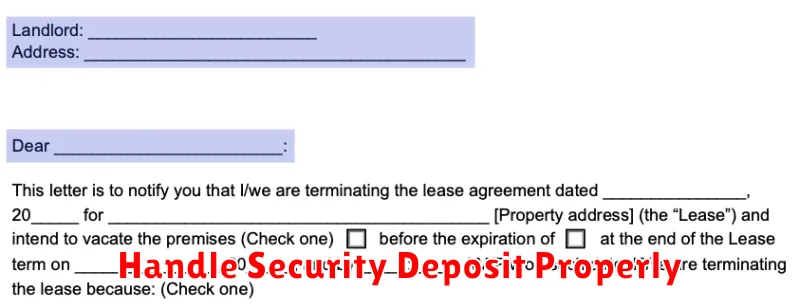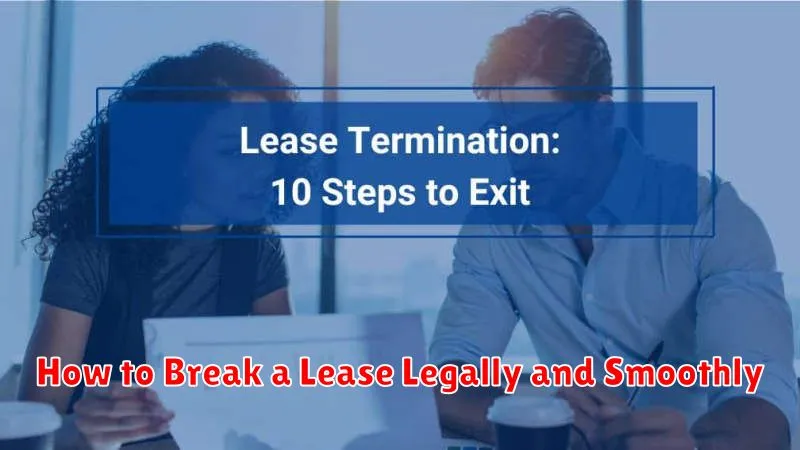Breaking a lease can be a complex and stressful process, but it doesn’t have to be. Whether you’re facing unforeseen circumstances like job relocation or a family emergency, or simply need to move for personal reasons, understanding your legal rights and obligations is crucial. This guide will provide you with the necessary information on how to break your lease legally and smoothly, minimizing potential financial penalties and preserving your positive rental history. We’ll cover key aspects of lease agreements, explore legal grounds for breaking a lease, and outline strategies for negotiating with your landlord to reach a mutually agreeable solution. Learn how to navigate this challenging situation effectively and avoid costly legal battles.
From understanding the implications of breaking a lease early to exploring options like finding a subletter or negotiating an early termination agreement, we’ll equip you with the tools you need to successfully navigate the process. Discover how to mitigate potential financial repercussions and protect yourself from legal disputes. This comprehensive guide will address common questions regarding security deposits, early termination fees, and your legal rights as a tenant. By following the steps outlined here, you can confidently approach breaking your lease while minimizing stress and maximizing your chances of a smooth transition.
Review the Lease Agreement
The first step in breaking a lease legally is to thoroughly review your lease agreement. This document outlines the terms and conditions of your tenancy, including specific clauses related to early termination. Carefully examine the document for any pre-defined exit clauses, buyout options, or required notice periods.
Look for sections addressing the following:
- Early Termination Clause: Does the lease specify penalties or procedures for breaking the lease early?
- Buyout Option: Is there a stipulated fee you can pay to terminate the lease?
- Notice Period: How much notice are you required to give your landlord if you intend to vacate before the lease expires?
- Subletting Clause: Does the lease allow you to sublet the property to another tenant?
- Military Clause: If applicable, are there provisions for military personnel who receive deployment orders?
Understanding these clauses is crucial. Highlight any relevant sections and keep a copy readily accessible for future reference.
Give Proper Notice

Providing adequate notice is crucial for legally breaking a lease. Review your lease agreement carefully to determine the required notice period. Most leases stipulate a 30- or 60-day notice period, meaning you must inform your landlord of your intent to vacate within that timeframe.
Deliver your notice in writing, preferably through certified mail with return receipt requested. This provides proof of delivery and protects you from potential disputes. Your written notice should clearly state your intended move-out date. Be polite and professional in your communication.
Failing to provide sufficient notice can lead to penalties as outlined in your lease. These may include forfeiting your security deposit or being held responsible for rent payments even after you’ve vacated the premises.
Negotiate with the Landlord
Often, the simplest way to break a lease is to negotiate directly with your landlord. Explain your situation clearly and honestly. A good landlord-tenant relationship can go a long way in these circumstances. Be prepared to offer solutions, not just problems.
Offer to find a replacement tenant yourself. This saves the landlord the hassle and expense of advertising and screening. If you find a qualified tenant, your landlord may be more willing to release you from the lease.
Propose a buyout agreement. This involves paying the landlord a sum of money to cover the remaining rent payments, or a portion thereof. Be prepared to negotiate this amount, and get any agreement in writing. Consider offering a few months’ rent or the cost of finding a new tenant as a starting point.
Document everything. Keep records of all communication, including emails, letters, and notes from phone calls. This documentation is crucial if any disputes arise later.
Find a Replacement Tenant
Finding a replacement tenant is often the smoothest way to break a lease. This involves you finding a qualified individual to take over your lease agreement for the remaining term. This benefits both you and your landlord as it avoids vacancy costs and legal disputes.
Check your lease agreement. Some leases explicitly allow for this, outlining specific procedures you must follow. Even if it isn’t explicitly mentioned, it’s always worth approaching your landlord to discuss this option. They might be receptive, especially if you present a qualified candidate.
Actively search for replacements. Utilize your network, online platforms, and even bulletin boards within your community. Be prepared to screen potential tenants and provide their information to your landlord. The final decision on approving the replacement tenant typically rests with the landlord.
Handle Security Deposit Properly

Your security deposit is a crucial aspect of ending your lease. Understanding your rights and responsibilities regarding its return can prevent future disputes.
Thoroughly clean the premises: A clean unit increases the likelihood of receiving your full deposit back. Address any damage beyond normal wear and tear.
Document the condition: Take photos and videos of the cleaned unit as evidence of its condition upon your departure. This documentation can be invaluable if disagreements arise.
Understand your state’s laws: Regulations regarding security deposit returns vary. Familiarize yourself with your state’s specific laws concerning deadlines, permissible deductions, and required documentation from your landlord.
Forwarding Address: Provide your landlord with a current forwarding address in writing to ensure proper delivery of your security deposit.

